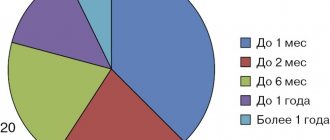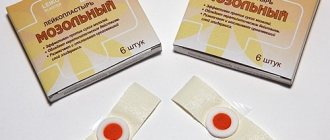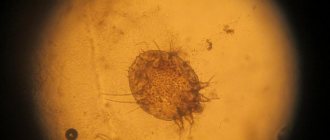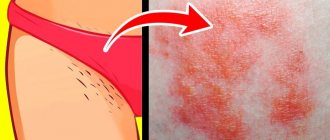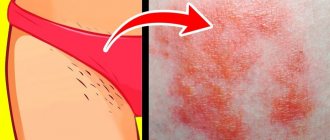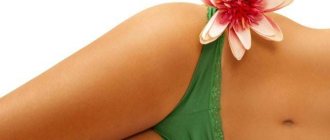Causes of corns formation in children and adults
The cause of corns is insufficient blood circulation in certain areas of the lower part of the feet , when cells die and become layered in an area of difficult blood access.
In the absence of proper hygienic care, the layers of dead cells harden and a rod forms. The causes of impaired blood circulation in the feet, causing the appearance of corns on the soles of adults and children, are similar.
In adults:
- Impractical shoes.
- Thin or hard shoe soles.
- Walking for a long period of time in high heels, frequent sand getting into the shoes, and the presence of chafing seams in them.
- Deformation or absence of shoe insoles, disproportionate socks and refusal to wear them.
- Low-quality, synthetic material for socks and shoes.
- Increased load on the legs associated with professional activities or excess weight of a person.
- Arthritis and arthrosis of the leg joints.
- Diabetes.
- Flat feet and foot injuries.
- The presence of fungal diseases and papillomatosis viruses.
- Reduction in the thickness of the fatty layer of the epidermis of the feet and drying out of the skin of the soles of the feet in old age.
- Increased secretion of the sweat glands of the feet.
In children, the occurrence of corns is associated with improper formation and development of the foot or unsuitable shoes:
- inappropriate shoe size;
- deformed insole;
- chafing seams or hard soles on shoes;
Corns on the sole with a rod (treatment, photos, methods for preventing corns later in the article) reduce the sensitivity of the compacted area of the skin and give a stabbing sensation when walking. Before treatment procedures, the cause of callus formation should be determined and eliminated.
Medical diagnosis of callus
Core-type calluses are fairly easy to diagnose.
After an in-person consultation, a dermatologist can provide a conclusion and diagnosis about the type of skin growth.
The only difficulty may be differentiating an ingrown callus from Verruca plantaris (plantar wart).
Because they have the same location and appearance.
You can distinguish a callus from a wart by the following features:
- An ingrown callus is not accompanied by bleeding even with strong pressure on it.
- A wart, unlike a callus, is not a single formation. Typically, upon examination, several warts that resemble cauliflower can be identified.
- The callus in its central zone has a small depression, which can be seen upon detailed examination. In the case of a wart, the HPV formation consists of thin fibers; petechiae (black dots) are observed on top, which bleed when injured.
- If a wart is present, pain occurs when the lesion itself is palpated; there is no pain when walking. In the case of calluses, pain is observed with any mechanical movement.
To confirm the diagnosis and determine the cause of the disease, the dermatologist prescribes a blood test for diabetes mellitus.
Also an analysis to determine the human papillomavirus, to exclude HPV.
Additionally, the doctor can redirect the patient to other specialized specialists.
See a podiatrist (a doctor who treats foot pathologies), a rheumatologist or an orthopedist.
An important point is to exclude Morton's neuroma.
Morton's neuroma is a benign or non-cancerous growth of fibrous tissue.
Develops in the area of the tibial nerve, most often between the third and fourth fingers.
The pathology is accompanied by thickening of the plantar nerve, pain when walking, and a feeling of numbness in the fingers.
The disease is also known as Morton's metatarsalgia, plantar neuroma, and intermetatasal neuroma.
Types and photos of corns
Corns are divided into several types:
- wet - in the form of a watery blister;
- blood - in the form of a blister with blood;
- dry calluses - in the form of a gray-yellow plaque;
- corns with a rod - a gray-yellow hardening on the skin of the foot, without clear edges, with a dark rod inside the seal.
On the sole, corns and calluses differ not only in appearance, which is noticeable in the photo, but also in treatment methods.
Watery and bloody calluses are lubricated with salicylic ointment and sealed with a callus plaster. It is not recommended to puncture blisters to avoid infection, and the substrate inside the blister is secreted by the epidermis for healing and the formation of new skin cells.
The release of a liquid substance into the resulting cavity is a protective reaction of the body, preventing inflammatory and infectious processes in the damaged area of the skin.
Dry calluses and corns with a core require a long period of treatment with traditional, pharmaceutical or folk remedies. Elimination of them should begin in the early stages to prevent the appearance of cracks and inflammation of the skin around the corns and deeper layers of the epidermis.
How to get rid of calluses on your feet yourself
The easiest way to cure a water callus is to wait for it to burst, or to pierce it yourself. However, it is important to take care of disinfection, otherwise there is a risk of infection.
When deciding how to get rid of dry calluses, you need to take into account the area and depth of the lesion. For example, a small thickening on the little finger can be removed with a pedicure file or pumice stone. You may first need to soften the skin in a hot bath with the addition of various components.
Dry calluses on the foot can also be removed by applying salicylic ointment at night or by sticking a special medicated patch.
However, doctors do not recommend removing calluses yourself, as there is always a risk of damaging the skin and causing infection, which will create additional problems and complicate treatment.
Complications of corns on the sole with a rod
The lack of timely treatment provokes the formation of a root stem, which grows into the deep layers of the epidermis and over time causes serious complications. The rod begins to touch the ends of nerve fibers, muscle tissue and ligaments, causing pain and swelling of the foot.
The root itself becomes inflamed and causes damage to the skin around the callus, often with the release of ichor and pus from the resulting hole at the site of the rod. The inflammatory process spreads to the adjacent area of the skin, causes sepsis and can develop into phlegmon of the foot.
Impaired immune system function in diabetes mellitus creates the risk of developing a non-healing wound in place of cracked skin. Untimely removal of hardened tissue and treatment of corns can provoke the development of diabetic foot and wound suppuration.
Laser excision of callus
Laser callus removal remains a priority treatment method.
Allows you to effectively eliminate the problem with minimal risk of recurrence.
The laser penetrates into the deep layers of the dermis, which makes it possible to remove the root completely, rather than partially.
The operation of the device is based on the reproduction of a laser beam with special light properties:
- Monochromatic: Has only one specific wavelength or color.
- Coherence: Vibrates in the same phase or synchronously.
- Divergence: the beam works in a given direction.
During the manipulation, the epidermal layer is “burned out”, one after another.
The manipulation requires the use of an anesthetic.
The average session duration is no more than 10-15 minutes.
Before using the laser, the callus is treated with antiseptic drugs.
After laser irradiation, a dense crust forms, which will disappear after 10-14 days.
Laser treatment to remove calluses leads to cell regeneration.
It has an anti-inflammatory effect and stimulates the local immune system.
Thus, it promotes rapid healing of wounds.
However, the main advantage of the laser is the complete removal of callus even with a deep root location.
Often, one visit to a dermatologist is enough to effectively eliminate the problem.
Folk remedies for the treatment of corns
Corns on the sole with a rod, treatment (photo later in the article) which can be carried out independently using available procedures, disappear within 2-4 weeks. All methods are aimed at softening the hard layer of dead callus cells and the core, and gradually removing dead skin using a pumice stone or a stiff brush.
Effective folk methods for treating corns:
| 1. | Soda, salt, herbal foot baths | used to soften callus tissue, have an antibacterial, anti-inflammatory and healing effect. |
| 2. | Oil compresses with the addition of prunes, honey, aloe and bread | soften the skin around the shaft and promote root exit. |
| 3. | Propolis, honey, onion, garlic, lemon | have a bactericidal, softening and healing effect on the damaged area of the skin. |
| 4. | Poultices and lotions made from herbal decoctions | accelerate the healing of cracks, relieve inflammation, soften the skin of the feet. |
Methods can alternate and complement each other to achieve a better effect.
Main skin problems on the feet
A podiatrist is regularly contacted with the following foot skin pathologies:
- calluses;
- cracks of different depths;
- dry skin;
- hyperhidrosis;
- corns;
- hyperkeratosis.
The specialist’s task is not only to identify the presence of pathology and select a method for eliminating it, but also to determine the causes of its occurrence - this will help carry out prevention and prevent the occurrence of pathologies in the future.
Vegetables and fruits
Traditional medicine recipes recommend simple treatment of corns using vegetables and fruits. Among the first effective are onions and potatoes; the fruits used are lemon and prunes.
Onions are used as a night compress after a steam bath, raw, baked or soaked in vinegar:
- The raw onion is crushed into puree and applied to the foot, covered with cellophane, and a thick sock is put on top. In the morning, the compress is removed, the softened layer of skin is removed with pumice, and the sole is smeared with a rich cream.
- The onion is cut into 2-4 parts, soaked in vinegar for 2-3 days, then applied to the corns overnight. The compress is fixed with a bandage and a sock is put on. In the morning, the compress is removed, the foot is treated with pumice and softening cream.
- The baked onion is chopped, placed before bed on a steamed callus under cellophane and secured with a thick sock. In the morning, rinse your feet with soapy water, remove dead skin with a pumice stone and lubricate your feet with cream.
The procedures are repeated every evening until the corns resolve. Potatoes are applied in a raw, crushed state after an overnight bath, under a film and a sock. In the morning, the corns are treated with pumice or a brush and lubricated with cream.
For ease of distribution and removal of the compress, chopped vegetables can be placed in a piece of gauze or bandage.
Lemon night compress is made from lemon peel and some zest. To do this, cut off part of the peel along with the zest to the size of the corn. Apply after a steaming bath under film and socks for 6-8 days. In the morning, the softened part of the skin is cleaned and washed off, and a moisturizer is applied.
To make a prune compress, seedless berries are boiled in milk and applied to the callus while hot for 25-35 minutes. The prunes should be covered with cellophane and the leg should be wrapped in a woolen scarf or cloth. This procedure is effective for quickly separating and exiting the rod, softening the callus growth.
Butter and bread
Recipes using bread and different types of vegetable oil are effective. Products are used in the form of night softening compresses. White bread is soaked in vinegar, kneaded until smooth and applied to the area of hardened skin. The bread mass is covered with cellophane and secured with thick cloth or socks.
In the morning, the compress is washed off, the softened skin is peeled off and the feet are smeared with cream. Duration of therapy is 1.5-2 weeks. Various types of vegetable oils are used for compresses, including fortified and cosmetic types.
For the procedure, you need to wet cotton socks with oil, lightly wring them out and put them on your feet under plastic bags. Warm, thick socks are worn on top. In the morning, wash off the oil and treat the soles of your feet with pumice.
What is hyperhidrosis
Hyperhidrosis is increased sweating, which leads to the formation of skin pathologies. An area with constant high humidity and a temperature comfortable for the growth of bacteria is created in the foot area. This causes an unpleasant odor and peeling of the skin in large areas.
The main reasons for the development of hyperhidrosis:
- disorders of the thyroid gland;
- wearing uncomfortable shoes with poor ventilation;
- the use of low-quality creams based on synthetic bases that form an airtight film on the surface of the skin.
The main problem with hyperhidrosis is thick and swollen skin. It is difficult to process using hardware methods. To relieve the main symptoms, it is recommended to sprinkle the damaged areas with baby powder or talcum powder.
To treat hyperhidrosis, alcohol-based antiseptic formulations are used. The treatment can be done in a beauty salon. After hygienic treatment, the feet are wiped and treated with talcum powder. Prepared feet are processed using hardware methods using cutters with a hardness of 100-280 grit. After completing the procedure, the master will definitely give recommendations.
General recommendations:
- use a deodorant recommended by a specialist;
- wear shoes and clothes made from natural materials;
- take good care of your shoes;
- Perform regular foot hygiene procedures at least twice a day.
- Pay special attention to the condition of the insoles.
Herbal compresses
To remove corns, compresses made from celandine, dandelion and aloe are used:
- The aloe leaf is cut lengthwise, the required piece is cut to the size of the corn and the pulp is applied to the callus. It is fixed with a plaster or bandage, covered with cellophane and a sock is put on. It is left until the morning, then removed and the area is treated with pumice. Aloe has a bactericidal, anti-inflammatory and softening effect.
- Celandine leaves are crushed into a homogeneous mass, the puree is collected in gauze or a piece of bandage, and applied to the keratinized area of the foot overnight under cellophane and a sock. In the morning, exfoliated dead tissue is removed. The procedure is repeated every evening until the corn disappears.
- The juice is squeezed out of a dandelion plant (without roots) and the area of the corn is smeared after a steaming bath before bed. Can be used as a compress from the juice or pulp of the plant. Every day you need to remove exfoliated skin using a pumice stone or a stiff brush and lubricate your feet with a softening cream.
Compresses can be made from individual plants, or combine several types, add decoctions of chamomile, calendula, and plantain juice.
Healing lotions
Effective means for treating inflamed, old and new corns are lotions. They are placed overnight after hot baths on the inflamed areas of the foot.
For lotions are used:
- decoctions of chamomile and calendula;
- juice of celandine, plantain and aloe;
- plantain leaves;
- pulp of aloe leaves;
- onion or garlic juice with honey.
For lotions made from decoctions and plant juices you need:
- soak in a medicinal liquid a piece of gauze folded several times to the size of the corn, or the entire plane of the sole;
- after steaming your legs, apply a soaked swab to the problem area;
- cover with cling film or cellophane;
- secure the lotion with a bandage and put on thick socks;
- In the morning, remove the bandage, treat your feet with pumice stone and lubricate with rich cream.
In the same sequence, you can apply aloe pulp, clearing the leaf of the hard, green peel. Plantain leaves should be pre-washed and mashed in your hands until soft.
Effective baths
Foot softening baths are effective for any calluses, corns, hardening or abrasions of the skin. Corns on the sole with a core, the treatment (photo of the procedure) of which takes a longer period than ordinary calluses, it is advisable to steam them before further procedures. For baths you will need a basin that is the size of your feet.
Types of softening baths:
- Baking soda and laundry soap - dissolve 1 tbsp in 1 liter of hot water. l. grated dry soap and 3 tsp. soda, you can add 1 tsp. ammonia. You need to steam your feet for 35-45 minutes, then treat your feet with pumice and apply a medicinal composition or lubricate them with cream.
- Fermented milk bath – heat 1.5 liters of whey, curdled milk or sour milk to 40 degrees, immerse your feet in the hot liquid for 45-50 minutes, then wipe your feet and spread with cream or vegetable oil with glycerin (1/1 ratio).
- Cool water and salt - dissolve 1 tbsp in 1 liter of water. l. salt, you can use sea salt. Immerse your feet in the solution for 35-40 minutes, then treat the soles with pumice and lubricate them with a softening cream.
- Hydrogen peroxide and water – add 50 ml of 3% hydrogen peroxide to 1 liter of warm water. Soak your feet in the solution for 40-45 minutes, clean the exfoliated skin with a pumice stone or grater, and spread your feet with a rich cream.
- Potassium permanganate with salt - dissolve 1 tbsp in 1 liter of warm water. l. kitchen salt and several crystals of potassium permanganate until a bright pink liquid forms. Soak your feet for 20-30 minutes, then let your feet air dry for the solution to be absorbed by the skin.
- Onion decoction - after boiling the onion for compress, cool the water to an acceptable temperature, lower the feet and soak them in the decoction for 30-40 minutes, treat with pumice and apply a compress of boiled and chopped onion to the corns.
- Decoctions of chamomile, calendula, pine buds - you can make baths from individual decoctions of each plant, or combine decoctions in any combination. The effect of herbal decoction baths is enhanced by adding 4-5 drops of iodine or lemon juice to the solution.
Treatment with salicylic acid
Many pharmaceutical products for the treatment of corns include salicylic acid. The drug has an exfoliating effect on dead tissue, heals and disinfects small cracks in the skin. The products are convenient for independent use.
Salicylic acid in the form of an alcohol solution should be applied strictly to the location of the corn or callus, avoiding contact of the acid with healthy skin to avoid burns.
Apply the drug with a cotton swab only on the hardened surface for 3-4 rubles. per day until the dead cells are completely sloughed off. The course of treatment is 1-3 weeks. Before applying preparations with salicylic acid, it is recommended to make steaming baths for the feet.
How to treat corns
- local remedies, patches and ointments;
- medical pedicure;
- cryodestruction - corns are removed with liquid nitrogen;
- laser method - finds for large old corns. The doctor regulates the time and depth of penetration, there are no complications.
Drug treatment is prescribed if the patient is simultaneously diagnosed with a fungus or inflammation of this area. In this case, antiviral and anti-inflammatory drugs are prescribed.
The price for all types of services will vary; you can see it in our price list or check with a consultant. Positive reviews from patients indicate that people were satisfied with the quality of care and service, and gained an easy gait without agony and pain.
Treatment with propolis
Propolis is an effective means of quickly removing corns. To do this, you need to knead the required amount of propolis in your hands, form it into a cake and apply it to the steamed corns. Cover the compress with film on top, secure with a bandage and put on a sock.
After 12 hours, remove the cake, steam the foot and clean it with pumice. Then apply a compress of fresh propolis in the same sequence for the next 12 hours. To completely remove the corns, 5-8 days are enough.
Our specialists
- Kiani Ali
Candidate of Medical Sciences, laser medicine specialist, dermatocosmetologist.
Sign up
- Stepanova Inna Igorevna
Candidate of Medical Sciences, maxillofacial surgeon, specialist in laser medicine.
Sign up
- Fedotova Marina Andreevna
Surgeon, dermatocosmetologist, laser medicine specialist
Sign up
- Popovkin Pavel Sergeevich
Surgeon, oncologist, laser medicine specialist.
Sign up
Soda
Baking soda softens accumulations of dead skin cells and corns.
In addition to steam baths with soda solution, soda can be used as a night compress in combination with:
- tomatoes;
- onions;
- boiled prunes.
The crushed products (each separately) are mixed with soda to a puree consistency and applied to the sole with a gauze bandage. The compress is covered with cling film and secured with a thick sock for 7-8 hours. The duration of the procedures is 1-1.5 months.
Apple vinegar
Apple cider vinegar relieves inflammation in the area of calluses and corns; it is used in various combinations in the form of night compresses after steam baths:
- Mix equal amounts of sea salt and baking soda, dilute with apple cider vinegar until pureed. It is applied to the corns on a gauze napkin and covered with a film, and a sock is put on top. In the morning, remove the exfoliated skin with pumice and lubricate the sole with cream.
- 1 tbsp. l. apple cider vinegar mixed with 1 tbsp. l. vegetable oil and 1 egg. Beat the mixture, soak a napkin in it and apply to hardened areas of skin overnight. Put plastic bags and socks on your feet. In the morning, make a steaming bath with soda and remove the softened skin with a pumice stone. Lubricate the soles with nourishing cream.
- Cut the onion into 4 parts, soak in apple cider vinegar for a day, apply onion slices to the corns in the evening and secure with a bandage. In the morning, remove the bandage, remove loose skin and lubricate the feet with cream.
Vinegar compresses are used for 25-30 days.
Homemade mask recipes
Effective and fast-acting in the treatment of corns are masks that quickly soften and peel off hardened skin.
You can make them yourself:
- Mask of 2 tbsp. l. flaxseeds and 100 g of potato peel are boiled in 400 ml of water for 30 minutes, kneaded until smooth and applied warm to the sole for 25-30 minutes. After time, the mixture is washed off, the skin is cleansed with pumice and lubricated with cream.
- Boiled for 10-12 minutes. ivy leaves are applied to the problem area for 20-25 minutes, then the softened callus tissue is cleaned with pumice and lubricated with a nourishing cream.
- For a prune mask, 150 g of seedless fruits must be boiled in 150 ml of milk until softened, mashed the berries and applied to the corn under cellophane for 30 minutes. After the mask, remove the separated layer of skin and lubricate the foot with cream.
Masks are useful in cases where it is not possible to perform long procedures with compresses, and the corns are not yet in a bad state.
Other remedies for treating corns at home
At home, other remedies can be used to treat corns.
The following is used as a compress:
- tomato paste;
- flatbread made from honey, butter, bran and rye flour;
- herbal tinctures;
- a mixture of ground garlic and lard.
Baths from:
- oat straw decoction;
- chamomile decoction and apple or lemon juice;
- chamomile decoction with the addition of marigold tincture and vinegar;
- hot water with a few drops of iodine and 1 tsp. soda;
- A cooled mask of potato peels and flax seeds can be diluted with hot water and used as a bath.
For the best effect, it is advisable to do the procedures in a complex combination.
Anti-callus pharmaceutical creams and ointments
Corns on the sole with a rod, treatment (photos and instructions for use are attached to the preparations) which need to be carried out with pharmaceutical preparations, can be carried out independently. These products include creams and ointments containing salicylic acid and a complex of other beneficial components, vitamins and plant extracts.
Ointments for the treatment of calluses and corns:
- Salicylic ointment softens, disinfects and exfoliates dead tissue, promotes the formation and growth of new epidermal cells. Depending on the percentage of the component, the ointment is applied directly to the problem area of the foot, or in the form of a bandage for 3.5-4 hours. Before using an ointment containing more than 10% active ingredient, the skin around the corn should be sealed with a plaster or smeared with Vaseline, to prevent tissue burns.
- Super anti-callosin is intended for core calluses and corns. The drug contains lactic acid, which quickly dissolves the roots of calluses and hardened areas. The product is distributed only on the calluses for 2 hours, covered with parchment or film and secured with a thick sock.
- Levomycetin ointment has antibacterial properties, is used for inflamed calluses, exfoliates, disinfects and heals the skin. The drug is applied for 4-5 hours, secured with a bandage.
Creams:
- The Doctor cream is made on the basis of urea and a complex of medicinal oils, softens and exfoliates dead epidermal cells. The product is spread 1 r. per day until the skin of the sole is completely cleansed.
- Namozol cream based on salicylic acid softens hard tissues of the corns, apply 1-2 r. per day under a patch.
Before using ointments and creams, you need to make foot baths. After using the products, remove the exfoliated skin with a pumice stone or grater and lubricate the feet with a nourishing cream.
Removal methods
Hardware treatment will help get rid of ingrown corns . All methods are painless, but are characterized by high cost.
Drilling
The service is provided in cosmetology centers. The procedure can be easily carried out by a pedicurist. The procedure uses keratolytic preparations, a special apparatus and drilling cutters of different sizes.
We'll tell you how to remove a callus using this method. The manipulation goes like this:
First, dead cells are removed. To do this, use salicylic or lactic acid. These drugs destroy the connection between epidermal cells.- Then, after removing the stratum corneum, the affected area is anesthetized.
- After this, the core of the callus is drilled out with a diamond cutter.
- A bactericidal patch is applied to the cavity that has formed.
The wound usually heals within 2 days . To avoid relapse, provoking factors should be excluded. To do this, it is recommended to wear comfortable shoes or use correctors that relieve excessive stress on the feet.
The price of the corns removal procedure is 500-2500 rubles. It includes anesthesia and dressing.
Cryotherapy
Calluses are cauterized with liquid nitrogen. The method is used if the core of the callus has not grown very deeply. This is due to the inability to control the depth of exposure, which sometimes leads to damage to healthy skin.
For freezing, cryogenic equipment is used, but most often an applicator. This is a tube at the end of which there is a nitrogen reservoir. Nozzles are selected according to the size of the problem area .
Important! Cryotherapy is prohibited if the core calluses have merged. After the procedure, a large area of skin is torn away. And the wound will heal for a very long time.
Typical procedure diagram:
- The callus and surrounding area of the skin are treated with an antiseptic. This is necessary, since microbes can provoke an inflammatory process. Chlorhexidine or Betadine are usually used.
The cap of the callus is lubricated with Akriderm or Skinoren. These drugs soften the stratum corneum of the skin, which facilitates the penetration of liquid nitrogen.- The procedure is performed with local anesthesia. To prevent pain, use Lidocaine or Novocaine.
- The callus is exposed to cryogenic liquid several times.
After treatment, the skin of the corn thickens, becomes white and dies. Complete rejection occurs after 3 days .
The cost of the procedure is about 500 rubles, but can increase significantly due to auxiliary medications.
Laser therapy
Removing corns with a laser is considered the most effective. The procedure is contactless and has many advantages:
- the operation lasts no more than two minutes;
- absolutely painless;
- local anesthesia;
- no repeat procedure is required;
- no scars;
- short rehabilitation.
The laser beam heats the rough skin, which causes a change in cell structure . They start to evaporate.
During the callus removal process, pathogenic microorganisms are destroyed. This prevents infection of the wound. The laser beam cauterizes the vessels, so there is no bleeding. The cost of laser removal is quite high, up to 4000 rubles.
Patches for corns with a rod
Patches for corns with a rod contain a high concentration of salicylic acid, have emollient and antibacterial properties, and contain substances for tissue regeneration:
- The Salipod patch is used for dry calluses and corns with a stick. The patch is applied only to the dry surface of the callus for 24-48 hours. It is secured on top with a piece of a simple larger plaster. Exfoliated, dead skin is removed along with the patch.
- The Urgo patch is intended for the treatment of advanced forms of core calluses, can be used for a long time, and has a protective lining against damage to healthy areas of the skin. Apply in the evening for 24-48 hours.
- The Compide patch for dry calluses contains viscous components that ensure the maintenance of a high level of humidity in the affected area. In this state, the callus and core soften and peel off faster. The patch has bactericidal, moisturizing and healing properties. The product is applied for 48 hours.
Before using callus plasters, you must first wash, steam and dry your feet.
Medicinal oils for removing calluses
Vegetable, cosmetic and essential oils are effective for removing calluses:
- when steaming feet, add a few drops of tea tree oil, lavender or lemon oil to baths with soda and salt;
- Sunflower, olive and castor oil are used for compresses;
- For massage and rubbing, mixtures of olive and essential oils of lemon, sage or rosemary oil are used.
The oil softens the skin of the feet, moisturizes and nourishes the deep tissues of the epidermis.
Removing callus using drilling
This procedure can be carried out in a pedicure salon.
During the manipulation, a special device resembling a drill is used.
The procedure does not require the use of anesthesia.
Since it is not accompanied by pain.
Drilling/excision of callus areas is carried out using special attachments.
An antibacterial ointment is first placed in the deepening of the callus to prevent the development of the inflammatory process.
For the first few days, the patient may feel minor discomfort, which goes away on its own and does not require treatment.
Dry callus is removed using a similar method, but provided that it is not neglected.
The drilling procedure has certain disadvantages:
- If the rod is located deep enough, this manipulation may be ineffective. Often several manipulations are required to completely remove the callus.
- In the process of drilling out the keratinized area of the dermis, damage to healthy skin is possible. The procedure requires a highly qualified specialist.
- This type of callus removal is a contact type of procedure, which means it is accompanied by an increased risk of infection.
Prevention of corns
Corns do not resolve on their own and their appearance should be prevented in advance.
Prevention of the appearance of corns with a rod on the sole.
To do this you need:
- monitor the condition of the feet, periodically do baths and cleansing procedures;
- eliminate inflammation of the feet at the initial stage;
- choose high-quality shoes made from natural materials with soft soles and a comfortable last;
- women need to remove high-heeled shoes for several hours during the day;
- use socks made of natural fibers;
- monitor the condition of shoes and promptly replace shoes or boots that have become unusable, change damaged insoles.
- Children's shoes must be replaced with appropriately sized or orthopedic models.
Treatment of corns on the sole, including those with a stem, is possible at home. Pharmacy preparations for eliminating them are accompanied by photos and detailed application diagrams; folk recipes are no less effective and accessible for both the treatment and prevention of calluses.
Author: Selyaninova T.V.
Corns: features and treatment
Corns resemble calluses, but are irregular in shape, large in size, have jagged edges, and are highly dense. The main means of combating corns is a combined pedicure. Cosmetologists use keratolic agents, which have a softening effect, and devices with attachments of varying degrees of abrasiveness.
The main causes of corns:
- low-quality, uncomfortable shoes;
- foot deformity;
- improper regeneration of the skin of the foot;
- dehydration and strict diets.
The regular appearance of corns, regardless of the shoes used, is a reason to visit an orthopedist.
The main stages of eliminating corns:
- visiting a pedicurist who will file the damaged area. The procedure is performed in several stages;
- daily home care;
- wearing shoes with orthopedic insoles;
- scheduled visit to a podiatrist.
With the help of a hardware pedicure, you can remove a small corn in one session. Large and dense ones are removed gradually, since if a significant area is removed in one procedure, the regeneration process is activated and the corns increase in size.




